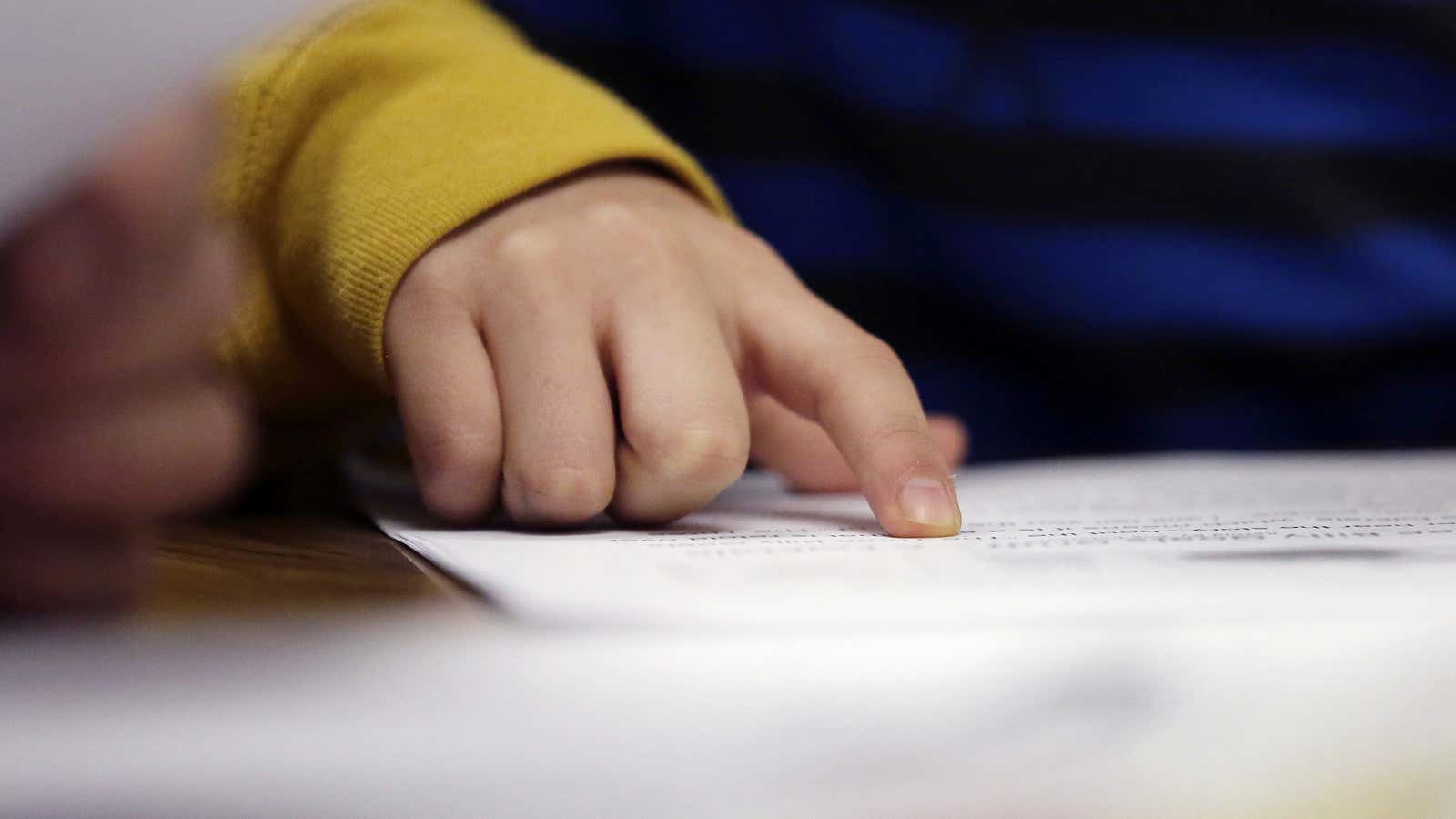In many places around the US, low-income and minority children are significantly underrepresented in gifted and talented programs. This seems to be the case whether the process for identifying gifted children relies on teacher referrals for screening, or on evaluations arranged and paid for independently by parents.
So what happens when you give every student a chance?
For starters, according to a new NBER working paper, you get a massive increase in diversity. At least that was the case at public schools in one of the United States’ largest and most diverse urban school districts.
In the early 2000s, the gifted population in the district studied by the researchers was far less diverse than the student body overall. While blacks and Hispanics accounted for 60% of the student population, only 28% of third graders who had been identified as gifted were black or Hispanic. (The district is not named in the paper, but the demographics, along with other details of the case study, match those of the Broward County Public Schools system in Florida, which the same researchers got grant money to study a few years ago.)
In 2005, the district adopted universal screening instead of using a referral program; all second-grade students took an ability test, and those who scored above a given threshold took an IQ test in order to qualify for a gifted-and-talented program.
Just passing the test didn’t guarantee a spot; there also was input from parents and teachers on whether the student possessed things like motivation, creativity, and adaptation. The threshold on the initial test was lowered slightly for disadvantaged “Plan B” students, who were either eligible for free or discounted lunches based on their family’s income, or were English leaners.
Budget constraints resulted in the universal screening program getting curtailed substantially just two years later, in 2007, and scrapped entirely in 2011. But the data that the experiment left behind is pretty staggering.
During the years in which universal screening was employed, there was a large influx of gifted students who were disproportionately likely to be poor, black, Hispanic, or who had parents who didn’t speak English.
Here’s the difference in the cohort immediately before the introduction of universal screening, and the one in the second year of the program:
The changes represent a 180% increase in the number of disadvantaged students, an 80% increase in the number of black students, and a 130% increase in the number of Hispanic students classified as gifted.
The researchers—economics professor David Card at the University of California, Berkeley, and Laura Giuliano, an associate professor of economics at the University of Miami—suggest that universal screening leveled the playing field for students who traditionally get overlooked in referral-based systems.
Notably, the study shows that students who might not have been classified as gifted under the old regime did well once they got into the gifted programs.
“[I]f anything, the newly identified students benefitted even more from participating in gifted education than did the group of always takers who [would] be identified under a traditional referral system,” the researchers observed.
An “always taker” is the sort of student who likely would have ended up being IQ-tested even in the absence of universal screening.
The previous regime had badly skewed the distribution of gifted children towards richer, whiter geographical areas. Half of gifted students were in schools that served just 18% of the population, a proportion that changed dramatically with universal screening.
But the district, facing a budget crunch, eventually stopped universal screening because of the added expense of having so many more students take the tests, which were administered by school psychologists and required a lot of overtime pay. Things quickly went back to the way they had been before the introduction of universal screening.
Given how many gifted children the old regime seemed to miss, and the economic and racial homogeneity it seemed to promote, the overtime seems like it might be worth paying.
